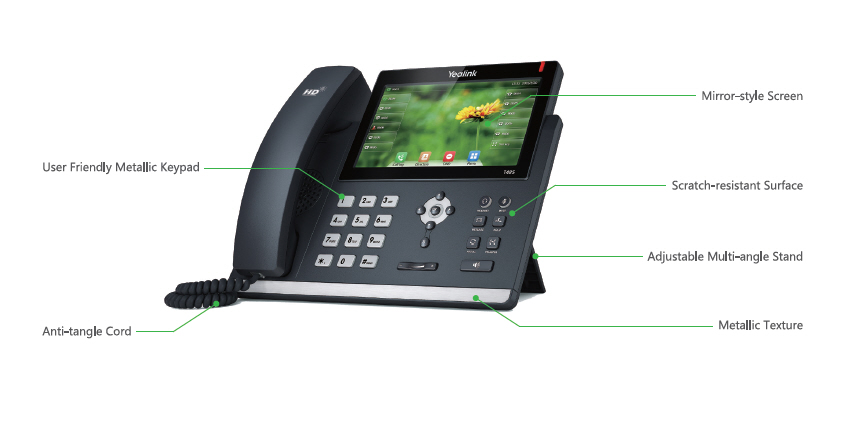Introduction
In the rapidly evolving landscape of business communication, companies must adapt and innovate to stay competitive. One of the most significant developments in this realm has been the rise of Voice over Internet Protocol (VoIP) phone systems, which have challenged traditional telephony solutions head-on. With scalability becoming a crucial factor for growing businesses, many are left wondering, “VoIP Versus Traditionals: Which Provides Better Scalability for Growing Businesses?”
From small startups to large enterprises, every business is on a quest to optimize its operations while keeping costs manageable. In this article, we’ll dive deep into the comparison between VoIP phone systems and traditional telephony solutions, exploring how each serves the scalability needs of businesses—big or small.
Understanding VoIP Phone Systems
What is VoIP?
Voice over Internet Protocol (VoIP) refers to a technology that enables voice communications to be transmitted over the internet rather than through conventional telephone lines. This method of communication allows users to make and receive calls via broadband connections, making it both cost-effective and versatile.
How Do VoIP Phone Systems Work?
VoIP phone systems convert voice signals into digital data packets and transmit them over the internet. These packets travel through various networks before reaching their destination, where they are converted back into audio signals that can be understood by the recipient.
Key Features of VoIP Phone Systems
Cost-Effectiveness: Offers lower call rates and reduced operational costs. Flexibility: Easily integrates with existing software like Customer Relationship Management (CRM) tools. Mobility: Allows users to make calls from anywhere with an internet connection. Scalability: Facilitates easy addition or removal of lines based on business needs. Advanced Features: Includes voicemail-to-email, call forwarding, video conferencing, and more.Exploring Traditional Telephony Solutions
What Are Traditional Phone Systems?
Traditional telephone systems refer to landline-based communication methods that utilize circuit-switched networks for voice transmission. These systems have served businesses for decades but face challenges in today’s fast-paced digital environment.
How Do Traditional Phone Systems Operate?
Traditional phone systems use copper wires or fiber optics to establish a dedicated circuit between callers. This circuit remains open throughout the conversation, ensuring consistent call quality but at a higher operational cost.
Limitations of Traditional Telephony Systems
High Costs: Installation and maintenance can be expensive. Lack of Flexibility: Difficulties in scaling up or down based on demand. Limited Features: Basic functionalities compared to modern VoIP systems. Dependency on Physical Infrastructure: Requires physical wiring and hardware setups.The Importance of Scalability in Business Communication
Defining Scalability in Business Contexts
Scalability refers to a business's ability to grow and manage increased demand without compromising performance or incurring excessive costs. Effective communication is vital for this growth; therefore, choosing the right system is crucial.
Why Is Scalability Essential For Growing Businesses?
- As businesses expand, their communication needs evolve. A scalable system accommodates additional employees without requiring extensive infrastructure changes. Enhances collaboration across teams as companies grow geographically.
VoIP Versus Traditionals: Which Provides Better Scalability for Growing Businesses?
When evaluating "VoIP Versus Traditionals: Which Provides Better Scalability for Growing Businesses?", one must consider several factors:
Cost Efficiency:- VoIP systems require minimal upfront investment compared to traditional methods. As your team grows, adding new lines is often just a matter of adjusting settings rather than installing new hardware.
- Most VoIP platforms offer user-friendly interfaces that ease onboarding processes for new employees. Managing multiple lines becomes straightforward with cloud-based administration tools available in VoIP services.
- With features like auto-attendant systems and virtual receptionists readily available in most VoIP packages, businesses can manage increasing call volumes more effectively than traditional PBX systems allow.
- As businesses expand internationally, VoIP offers affordable long-distance calling options that traditional phones cannot match without hefty fees.
- The ability to integrate with other business applications means communication can evolve alongside your operations—something traditional methods struggle with due to their rigid nature.
Ultimately, if you're focused on growth without breaking the bank or complicating your tech stack further down the line, opting for a VoIP phone system seems like a no-brainer!

Comparative Analysis Between VoIP and Traditional Telephony Solutions
Cost Comparison Table
| Feature | VoIP Phone System | Traditional Phone System | |----------------------------|-------------------------|--------------------------| | Initial Setup Cost | Low | High | | Monthly Service Fees | Variable & https://lanegfby188.mystrikingly.com/ Typically Lower | Fixed & Often Higher | | Long-Distance Charges | Minimal/None | High | | Maintenance Costs | Low | High |

Feature Set Comparison
| Feature | VoIP Phone System | Traditional Phone System | |----------------------------|------------------------------------------------------|-----------------------------------| | Call Forwarding | Yes | Limited | | Video Conferencing | Yes | No | | Mobile Integration | Yes | Limited | | Virtual Receptionist | Yes | No |
Performance Metrics
Reliability Call Quality User Satisfaction Support ServicesWhile both options have their merits, it's hard not to notice how well-equipped VoIP phone systems are when it comes to meeting scalability demands!
Advantages of Using VoIP Phone Systems for Scaling Up Operations
Cost Savings That Count
One major draw of switching to a VoIP phone system is its potential for significant cost savings—especially as you scale up operations! Imagine having fewer overhead costs without sacrificing quality!
Low Maintenance Needs
With cloud-based infrastructure managing most aspects of your service delivery model—even updates—there's little need for ongoing technical support staff when you choose an efficient VoIP provider!
Flexibility Across Multiple Locations
If you plan on opening new offices worldwide—or even working remotely—your staff can access company resources seamlessly from anywhere they have internet connectivity!
Integrative Technology Options
Most modern-day solutions allow integrations with CRM platforms such as HubSpot or Salesforce—so all customer interactions remain documented effectively regardless if they're made via chat calls emails SMS etc.!
FAQs About "VoIP Versus Traditionals"
1. What makes VoIP more scalable than traditional phone systems?
VoIP offers flexibility in adding/removing lines easily without needing physical infrastructure adjustments—a significant advantage over traditional setups requiring extensive rewiring or equipment purchases!
2. Can I keep my current number when switching from traditional telephony?
Yes! Most providers enable number porting so you won’t lose any existing contacts during transition phases—saving time hassle related issues!
3.Is there any specific hardware required for using a voip phone system?
Basic requirements include compatible devices (like IP Phones) along high-speed internet connection however many options exist allowing smartphone usage too!
4.What happens if my internet goes down?
Most reliable vendors ensure automated failover solutions enabling continued access through cellular networks until service restoration occurs—minimizing disruption caused by outages!
5.How do I determine which provider suits best my needs?
Assess key factors such as pricing structures offered features available customer support responsiveness before committing contracts long term! Research extensively compare reviews prior final selection process too!
6.Are there hidden costs associated with using voip services?
While generally straightforward pricing exists sometimes extra charges may apply depending upon specific add-ons subscribed features used (like international calling plans)—so always read fine print carefully before signing agreements!
Conclusion
As we've explored throughout this article on “VoIP Versus Traditionals: Which Provides Better Scalability for Growing Businesses?”, it’s clear that when it comes down fundamentally scalability takes precedence over all else within modern digital environments!
By examining cost-effectiveness integration capabilities flexibility offered by contemporary solutions like VOIPs versus older models reliant upon rigid infrastructures—it becomes apparent why countless organizations are transitioning away from antiquated practices towards innovative technologies shaping future landscapes ahead!
So whether you're an ambitious startup readying yourself expansion plans already established enterprise seeking refine operational efficiencies… embracing change could pave way success stories yet told!
